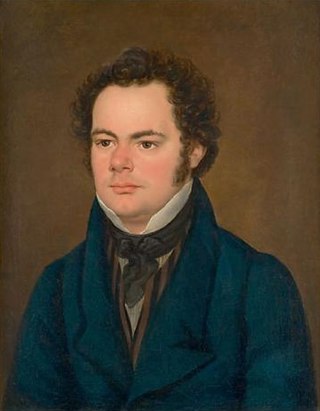Loading AI tools
From Wikipedia, the free encyclopedia
Mass No. 4 in C major, D 452, is a mass composed by Franz Schubert in 1816. It was originally scored for soprano, alto, tenor and bass soloists, SATB choir, violin I and II, and basso continuo (cello, double bass and organ). It is classified as a missa solemnis.[1]
| Mass No. 4 | |
|---|---|
| by Franz Schubert | |
 | |
| Key | C major |
| Catalogue | D 452 |
| Year | 1816 |
| Form | Missa solemnis |
| Movements | 6 |
| Vocal | SATB choir and soloists |
| Instrumental |
|

The setting was composed in June–July 1816, and possibly received its first performance in late summer or early fall of the same year at the Lichtental Church.[2] As in his previous masses, the soprano solos were written with Therese Grob's voice in mind.[3]
The mass shows the influence of Mozart in Schubert's work, particularly in the original reduced orchestration (the Salzburger Kirchentrio, Salzburg church trio)[4] and the perceived "lightness of touch".[5] Schubert's contemporary diary entries confirm his interest in Mozart's missae breves, along with the music of Michael Haydn, another Salzburg composer.[3]
Schubert made considerable revisions to the mass for subsequent performances. He added parts for 2 oboes or clarinets, 2 trumpets and timpani, all ad libitum, for an 1825 performance in St. Ulrich, Vienna.[2] He revisited the mass in 1828, seven weeks before his death, with a purely choral setting of the Benedictus (formerly D. 961) to replace the earlier soprano solo.[6][7] It is likely that this was in anticipation of a performance where a soloist of Grob's calibre was unavailable.
Schubert sold the score of Mass No. 4 and some shorter church works to Anton Diabelli for publishing in 1825.[8] It was the only mass published during the composer's lifetime.[9] Schubert dedicated the publication to Michael Holzer, the organist and choirmaster at the Lichtental church, and his teacher in organ, singing, figured bass and counterpoint.[10]
The mass consists of six movements. Performances require approximately 23 minutes. Commentary is for D 452, unless otherwise indicated.
Seamless Wikipedia browsing. On steroids.
Every time you click a link to Wikipedia, Wiktionary or Wikiquote in your browser's search results, it will show the modern Wikiwand interface.
Wikiwand extension is a five stars, simple, with minimum permission required to keep your browsing private, safe and transparent.